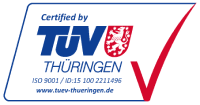Мінез-құлық кодексі
Мінез-құлық кодексі
Құндылықтар жүйесін жүзеге асыру үшін біз мінез-құлық кодекстерін жасадық. Олар біздің бүкіл әлемдегі барлық қызметкерлерімізге, компанияның ішінде де, сыртында да таралады. Біз бір-бірімізге құрмет көрсетеміз, іскерлік серіктестерімізге адал қараймыз, үнемі дамып, ресурстарды ұқыпты пайдаланамыз. Бұл ретте біз, әрине, заңнаманың барлық талаптарын сақтаймыз. Тәжірибе мен білімнің арқасында біздің компания өзінің тарихын кабельдік және жалғағыш техника үшін жүйелік шешімдердің жетекші өндірушісі ретінде жалғастырады.
Клиентке бағытталу. Отбасына бағытталу. Жаңашылдық. Табысқа бағытталу. Бұл LAPP компаниясы құрған құндылықтар. Біздің анық тұжырымдалған құндылықтарымыздың арқасында біз мықты компанияға айналдық және отбасылық кәсіпорын ретінде біз тек бірлескен күш-жігермен, компаниямыздағы және іскерлік серіктестеріміздегі топтық жұмыстың нәтижесінде табысқа жететінімізді білеміз. Оның негізінде біздің құндылықтарымыз жатыр. Егер біз күнде өз мінез-құлқымызды осы құндылықтарға сәйкестендіретін болсақ, бір-бірімізге және іскерлік серіктестерімізге адал және құрметпен қарайтын болсақ, біз LAPP компаниясының кабельдік және және жалғағыш техника үшін жүйелік шешімдердің жетекші өндірушісі ретіндегі табыстылық тарихын жалғастырамыз. Осы Мінез-құлық кодексінде біз күнделікті жұмысымыз үшін құндылықтарымыздың нені білдіретінін дәлірек сипаттауға тырысамыз. Бұл сізге пайдалы болады деп үміттенеміз.
Lapp Holding SE Басқармасы


